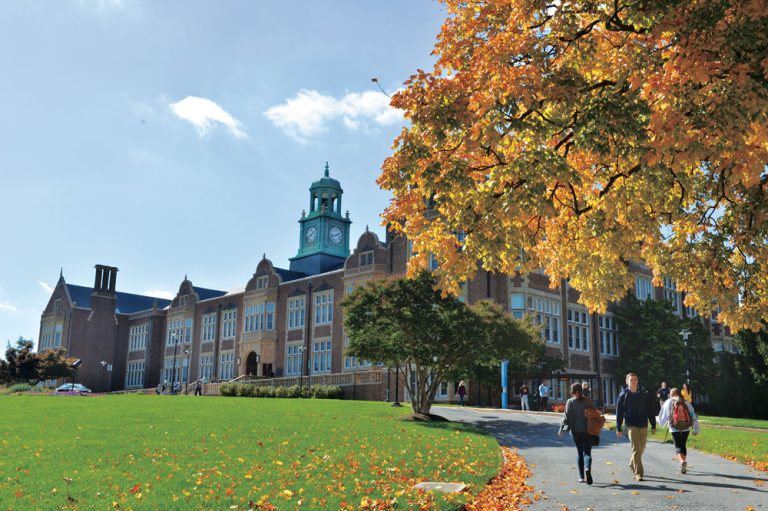Baltimore, MD Businesses Boast Wealth of Talent, Thanks to Local Schools
Greater Baltimore colleges and universities give the region a workforce advantage

One of Greater Baltimore’s most reliable economic development tools is its highly educated workforce. In fact, the region ranks fourth nationally for the percentage of residents with an advanced degree and eighth for the number of residents with bachelor’s degrees.
“It used to be that the top two factors impacting relocation decisions were real estate – available land – and incentives, with workforce being a distant third,†says Dr. Timothy Chandler, provost and executive vice president for academic affairs at Towson University. “But now, more and more, businesses are looking first at communities that have a ready workforce.â€
Overachiever
Towson is Greater Baltimore’s largest university, offering some 64 undergraduate degrees and more than 50 graduate degree programs. The university is ranked – along with fellow Baltimore institution Johns Hopkins University – among the nation’s top colleges by the likes of U.S. News & World Report, Forbes and Money magazines. The university has also ranked as a top college for veterans.
Chandler also notes that Towson was the first university in Maryland and one of the first in the nation to launch an undergraduate cybersecurity degree track. “Given where we are located, cybersecurity has become one of our fastest-growing programs. We’re addressing a workforce need for this growing industry†he says.
Find Out How Greater Baltimore Drives Maryland’s Economy
Ready for Work
Community College of Baltimore County also works to address current and future workforce needs. The college is perhaps the largest provider of workforce education in the region, with an enrollment of more than 62,000.
“Everything we do here is workforce development, whether we’re educating or training dancers and nurses or poets and engineers or plumbers and HVAC technicians. Because we’re so huge, we have the capacity to do almost any kind of training, from short-term certification all the way up to the associate degree,†says Dr. Sandra Kurtinitis, the college’s president. “Every year we graduate, either with a degree, a certificate, a workplace certification or a transfer to a four-year university, more than 13,000 students, and 97 percent of our graduates will stay to live and work right here in the Baltimore region. Nobody else can make that claim except a community college.â€
The college’s commitment to workforce development begins even before students get to campus. Kurtinitis says more than 2,000 high school students participate in the dual enrollment program, which allows them to earn both high school and college credits simultaneously.
“It’s fantastic for these kids and their families because it costs them nothing. So, if you want to send your son or daughter to Johns Hopkins, and Hopkins charges $65,000 a year, but your son or daughter has a transcript with 12 or 15 college credits when he or she graduates high school, you’ve just saved $32,000,†she says.
Discover Fun in the Water in an Unexpected Place: Baltimore, MD
Life-Long Learning
Providing access to higher education for the city’s diverse population is also a mission of Coppin State University. Coppin is one of only a handful of universities in the nation offering a “Cradle to Career†education continuum. The university operates a child care center, an elementary/middle school and a high school – covering the learning spectrum from infancy through post-graduate studies. Coppin also partners with community colleges and public agencies to offer courses online and off-site, thus providing higher education access to students who otherwise might be unable to complete a bachelor’s or master’s program.
“Community engagement is a cornerstone of Coppin’s existence, and we partner with businesses, governmental and non-governmental agencies to meet workforce demands,†says Tammy Hawley, associate vice president, marketing and communications at Coppin State.
One innovative example is the university’s micro-credentialing process as part of the Pathways to Professions program. Coppin officials work with public and private sectors to create multiple pathways toward professions by granting stackable, competency-based micro-credentialing badges across the life-long learning cycle.
“Coppin State works to bridge the gap between the classroom and the workforce by providing its students with real-world experience. We have partnerships with the business community that provide internships and practical training opportunities, allowing students to have hands-on opportunities and learn directly how to put their skills into action.†Hawley says.
Everything we do here is workforce development, whether we’re educating or training dancers and nurses or poets and engineers or plumbers and HVAC technicians.
